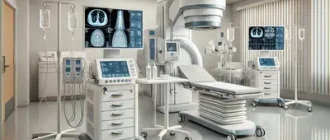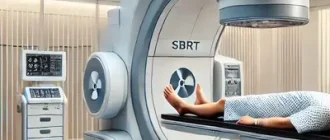Telemedicine has revolutionized healthcare, but in 2025, it has reached new heights with groundbreaking innovations. Remote monitoring is no longer just about tracking vitals—it’s about real-time AI-driven diagnostics, predictive analytics, and seamless integration with smart home devices.
Growth of Telemedicine Users (2020–2025)
| Year | Users (Millions) |
|---|---|
| 2020 | 50M |
| 2021 | 90M |
| 2022 | 130M |
| 2023 | 170M |
| 2024 | 200M |
| 2025 | 240M |
This chart illustrates the rapid growth of telemedicine users from 2020 to 2025. With increasing accessibility and technological advancements, the number of users has significantly risen each year.
AI-Powered Wearables: The Game-Changer
The latest wearable technology in 2025 does more than measure heart rate and steps. Devices now include AI-powered biosensors that continuously monitor glucose levels, blood pressure, and even early signs of infections. These smart wearables provide instant feedback, alerting both patients and healthcare providers before a condition worsens.
Savings from Telemedicine vs. Traditional Healthcare
| Healthcare Type | Average Cost per Visit ($) |
|---|---|
| Traditional Healthcare | $150 |
| Telemedicine | $60 |
This chart compares the average costs of telemedicine and traditional healthcare. Telemedicine offers significant cost savings, making healthcare more accessible and affordable for many patients.
Case Studies:
- A 52-year-old man from California – After years of struggling with diabetes, he started using an advanced glucose-monitoring wearable. One night, his device detected a dangerous drop in blood sugar while he was asleep and triggered an emergency alert, allowing paramedics to arrive just in time to prevent a coma.
- A 34-year-old woman from New York – She thought she had the flu, but her AI-driven smart ring detected subtle physiological changes associated with sepsis. The device immediately sent an alert to her physician, who ordered emergency hospitalization, saving her life.
- A 67-year-old retiree from Texas – His smartwatch noticed irregular blood flow patterns, predicting a possible stroke. Acting on the alert, he sought immediate medical attention, allowing doctors to administer clot-busting treatment in the critical window before major damage occurred.
- A 28-year-old fitness enthusiast from Florida – A routine run took a dangerous turn when her wearable device detected an abnormal heart rhythm. The AI-powered analysis suggested a rare congenital heart condition, leading to early intervention and a life-saving surgery.
5G and Edge Computing: Instant Data Transmission
With the expansion of 5G networks and edge computing, data transmission between patients and doctors is now nearly instantaneous. This allows for:
- Real-time video consultations without lag
- Faster AI diagnostics based on live patient data
- Secure and seamless integration of medical devices with hospital systems
Smart Homes Turned Health Hubs
2025 has seen the rise of AI-assisted smart homes that double as health monitoring stations.
Examples of AI-Assisted Smart Home Technologies:
- Smart Mirrors: These devices analyze facial features for signs of illness, such as skin discoloration, swelling, or fatigue, providing early warnings for conditions like dehydration or respiratory infections.
- Voice Assistants: Equipped with advanced AI, these assistants track medication adherence, remind patients of upcoming telehealth appointments, and even detect voice pattern changes that may indicate stress or neurological conditions.
- Smart Beds and Mattresses: These monitor sleep patterns, heart rate, and breathing irregularities, helping individuals with sleep apnea or cardiac conditions receive timely interventions.
- AI-Powered Kitchen Appliances: Refrigerators and smart dispensers assist with dietary recommendations based on a patient’s medical history, ensuring they maintain a healthy diet tailored to their condition.
Pricing for AI-Assisted Smart Home Technologies in 2025
| Technology | Average Price ($) |
|---|---|
| Smart Mirrors | $400 |
| Voice Assistants | $300 |
| Smart Beds and Mattresses | $600 |
| AI-Powered Kitchen Appliances | $500 |
This chart provides an overview of expected pricing for AI-assisted smart home technologies in 2025. These devices, including smart mirrors, voice assistants, and AI-powered kitchen appliances, enhance healthcare monitoring and lifestyle convenience.
Predictive Healthcare with Big Data
Predictive analytics have transformed remote monitoring by analyzing vast amounts of patient data to detect patterns and potential health risks. Algorithms can now anticipate strokes, heart attacks, and even mental health crises before they happen, allowing doctors to intervene proactively.
Key Medical Applications:
- Cardiology: Used to predict arrhythmias and heart attacks, allowing for early intervention and improved patient outcomes.
- Endocrinology: Helps in early detection of diabetes-related complications, reducing the risk of severe health crises.
- Neurology: Monitors and anticipates seizures, improving care for patients with epilepsy and other neurological disorders.
- Psychiatry: Assesses suicide risk based on behavioral patterns, enabling timely mental health support and crisis intervention.
As adoption grows, these applications continue to expand, making remote monitoring an indispensable tool across multiple medical disciplines.
Reyus Mammadli, health care advisor: “While predictive analytics and big data offer valuable insights into potential health risks, it’s important to remember that statistics are a tool for understanding trends and probabilities, not a definitive predictor of individual health outcomes. They help refine diagnoses and assess risk factors, but they do not predict the future with certainty. A patient’s health is influenced by numerous dynamic factors, and relying solely on statistical models without clinical judgment can lead to misinterpretation and unnecessary anxiety.”
Robotics and Virtual Nursing Assistants
Patients with chronic conditions or post-surgical needs benefit from AI-driven virtual nursing assistants and robotic caregivers.
Examples of AI in Virtual Nursing:
- Post-Surgical Recovery: A patient recovering from knee surgery receives real-time guidance from an AI-driven assistant, which monitors mobility progress and alerts doctors if rehabilitation is not on track.
- Chronic Disease Management: An individual with Parkinson’s disease uses a robotic caregiver that assists with daily activities, ensuring medication adherence and providing gentle physical support to prevent falls.
These innovations provide personalized care, from medication reminders to physical therapy guidance, all without requiring a physical hospital visit.
Challenges and Future Outlook
While these advancements are impressive, challenges remain. Data security, accessibility for rural populations, and ethical concerns over AI decision-making must be addressed. However, with continued innovation and regulation, telemedicine in 2025 is poised to further enhance healthcare efficiency, reduce hospital overcrowding, and ultimately save lives.
Most Common Conditions Managed via Telemedicine
This chart highlights the most common conditions managed through telemedicine. With advancements in virtual healthcare, many patients receive effective remote treatment for respiratory infections, mental health issues, chronic diseases, and more.
Editorial Advice
Reyus Mammadli, health care advisor: “Remote monitoring is no longer a luxury—it’s a necessity. The key to maximizing its benefits lies in patient education and seamless technology integration. The future of healthcare isn’t just remote—it’s predictive, proactive, and deeply personalized.”
About the Author
Reyus Mammadli is the author of this health blog since 2008. With a background in medical and biotechnical devices, he has over 15 years of experience working with medical literature and expert guidelines from WHO, CDC, Mayo Clinic, and others. His goal is to present clear, accurate health information for everyday readers — not as a substitute for medical advice.







